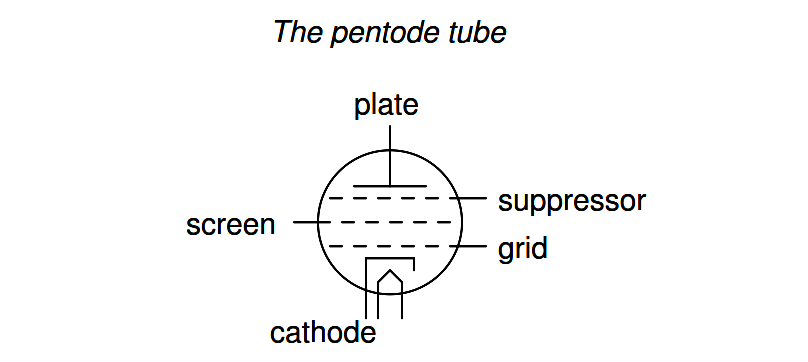Another strategy for addressing the problem of secondary electrons being attracted by the screen was the addition of a fifth wire element to the tube structure: a suppressor. These five-element tubes were naturally called pentodes.

The suppressor was another wire coil or mesh situated between the screen and the plate, usually connected directly to ground potential.
In some pentode tube designs, the suppressor was internally connected to the cathode so as to minimize the number of connection pins having to penetrate the tube envelope:
The suppressor’s job was to repel any secondarily emitted electrons back to the plate: a structural equivalent of the beam power tube’s space charge.
This, of course, increased plate current and decreased screen current, resulting in better gain and overall performance. In some instances it allowed for greater operating plate voltage as well.
Initially, AC motors were constructed like DC motors. Numerous problems were encountered due to changing…
Learn about the AC Instrumentation Transducers like Potentiometer, LVDT, RVDT, Synchro, and Capacitive Transducers.
AC bridge circuit unknown impedance is balanced by a standard impedance of similar type on…
Power Quality is the general term given to represent an AC power system freedom from harmonic…
Hall effect - Voltage is proportional to current and strength of the perpendicular magnetic field.…
Learn about the Frequency and Phase Measurement from our free online electronics and electrical engineering…